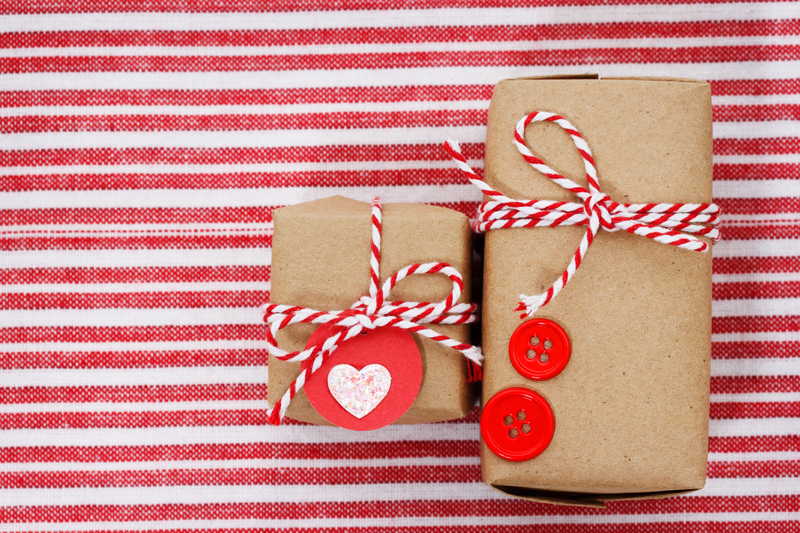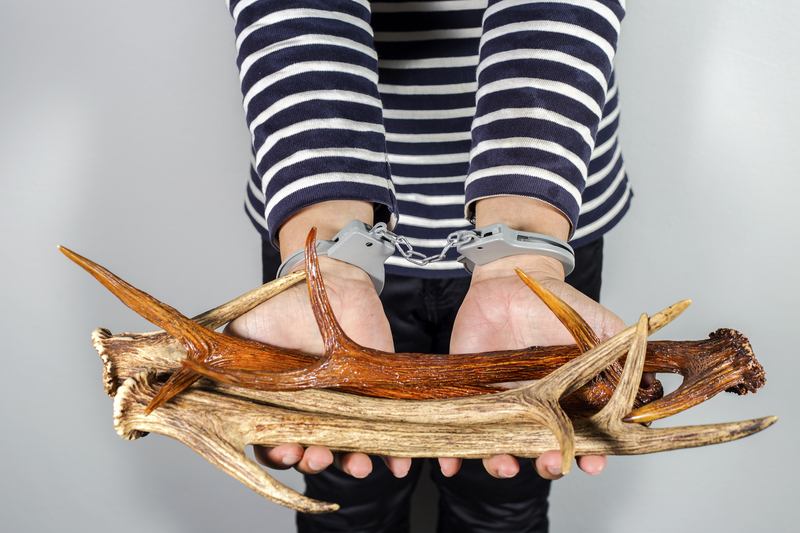From Waste to Wonderful: Upcycle Your Way to a Greener Home
In a world where waste continues to pile up, the importance of upcycling has never been clearer. Each year, millions of tons of household items end up in landfills, contributing to environmental damage and the depletion of our planet's resources. But what if you could transform trash into treasure, save money, and add unique style to your living space--all while reducing your ecological footprint? Welcome to the art of upcycling your way to a greener home!
Why Upcycling Matters for the Planet and Your Home
Upcycling--sometimes referred to as creative reuse--goes beyond simple recycling. While recycling often breaks down materials to their base forms, upcycling gives new life to old objects in their current state, transforming them into something useful, beautiful, or both.
Environmental Benefits of Upcycling
- Reduces landfill waste by keeping items in use longer
- Decreases resource consumption since fewer new goods need to be produced
- Limits pollution from manufacturing and waste management
- Encourages creative thinking and sustainable living habits
How Upcycling Creates a Greener Home
A true green home isn't just built with eco-friendly materials; it's maintained with sustainable practices. Upcycling household waste empowers families to minimize their environmental impact while customizing their living spaces with character and flair. Green living through upcycling brings financial savings, reduces clutter, and teaches valuable skills for all ages.

Getting Started: What Can You Upcycle?
Nearly anything that typically gets tossed can be transformed with a bit of imagination. Start by looking around your home for unused items--old furniture, jars, textiles, wooden crates, containers, and even thrown-away packaging. Here's a list of everyday objects you can upcycle into wonderful new creations:
- Glass jars and bottles: Turn into attractive vases, storage containers, or lanterns.
- Wooden pallets: Perfect for DIY furniture like coffee tables, headboards, or garden planters.
- Old t-shirts and fabric scraps: Convert into reusable shopping bags, rags, or patchwork quilts.
- Tin cans: Use for organizing desk supplies, making candle holders, or even planters.
- Cardboard and packaging: Great for children's crafts or as organizers for drawers and shelves.
- Furniture: Give a second life with new paint, upholstery, or creative repurposing.
Creative Upcycling Ideas for Every Room
1. Kitchen Projects: Sustainable, Stylish, and Practical
- Glass Jar Pantry: Instead of buying new containers, clean out empty jars and bottles and use them to store grains, spices, or snacks. Label each jar to keep your pantry neat and eco-friendly.
- Cutlery Organizer from Cans: Save tin cans, paint or wrap them with pretty fabric, and glue them together to create a stylish utensils holder.
- Fabric Napkins: Upcycle old sheets or clothing into washable napkins to reduce your use of disposable paper products.
2. Living Room: Upcycled Decor with Personality
- Pallet Furniture: Stack and paint wooden pallets to make coffee tables or add casters for mobile seating.
- Vintage Ladder Bookshelf: Repurpose a wooden ladder with a coat of paint and use it as a rustic bookshelf or plant stand.
- Candle Jars: Refill old candle jars with new wax and essential oils, or use them as succulent pots.
3. Bedroom Upcycling:
- T-Shirt Rugs: Convert worn t-shirts into a colorful braided rug. Cut into strips, braid, and stitch into a circular or oval shape.
- Drawer Planters: Transform an old dresser drawer into a unique flower bed or indoor planter.
- Repurposed Headboards: Turn old doors or pallets into eye-catching headboards for your bed.
4. Bathroom Hacks: Green Upcycling Solutions
- Glass Bottle Soap Dispenser: Fit a pump dispenser on a used glass bottle for a chic, eco-friendly way to store hand soap.
- Storage Baskets: Wrap cardboard boxes in leftover fabric or rope to make attractive storage for towels and toiletries.
- Toothbrush Holders: Use ceramic cups, tin cans, or small jars to organize toothbrushes and cosmetics.
5. Garden & Outdoor Spaces
- Rainwater Collector: Upcycle a food-grade barrel or large container into a rainwater collector to irrigate your garden.
- Shoe Organizers for Plants: Turn old shoe organizers into vertical herb or succulent gardens by hanging them on a fence or wall.
- Furniture Planters: Upcycle bathtubs, sinks, or wheelbarrows as eye-catching garden features.
Tips for Successful Upcycling at Home
Start Small and Build Confidence
If you're new to upcycling, select simple projects that require minimal tools, such as decorating jars or turning old shirts into bags. As you gain confidence, you can tackle bigger DIY upcycling ventures.
Clean and Prepare Your Materials
Wash jars, bottles, or cans thoroughly before use to ensure they're safe for food storage or crafts.
Use Non-Toxic Supplies
Whenever possible, choose non-toxic glues, paints, or finishes for your projects. This keeps your home safer and reduces environmental harm.
Gather Tools and Supplies
Basic upcycling tools include scissors, sandpaper, paint, glue, drill, and old fabrics or ribbons. You don't need advanced equipment to begin your journey to a greener home.
Find Inspiration Online
Social media platforms like Pinterest, Instagram, and YouTube are treasure troves of upcycling project ideas. Join online communities dedicated to creative reuse for endless inspiration!
Teaching Kids About Upcycling and Sustainability
One of the greatest gifts you can give your children is a sense of environmental responsibility. Upcycling as a family activity provides a perfect opportunity to discuss the importance of reducing waste, reusing materials, and protecting nature.
- Cereal Box Crafts: Encourage children to make organizers, toys, or picture frames from empty cereal boxes.
- Bottle Cap Art: Collect plastic or metal bottle caps to create colorful mosaics or fridge magnets.
- Egg Carton Projects: Transform egg cartons into caterpillars, flowers, or Christmas ornaments.
Making upcycling fun and interactive fosters problem-solving skills and eco-conscious habits that can last a lifetime.
The Difference Between Recycling and Upcycling
While both actions serve the environment, understanding the difference helps you make more informed choices:
- Recycling: Breaks down waste into raw materials to manufacture new products. This process often requires significant energy and resources.
- Upcycling: Adds value by creatively transforming objects into new forms without major processing or breaking down. This typically requires less energy and preserves more of the original material.
Which is Better?
Both recycling and upcycling are essential for a sustainable future, but upcycling offers greater environmental benefits where possible. By extending the life of household items, you reduce the demand for new goods and minimize energy use.
The Economic Advantages of Upcycling
Save Money with DIY Solutions
- Lower Home Decor Costs: Repurposing materials saves hundreds of dollars on furniture, storage, and decoration.
- Reduced Household Waste Removal Fees: The less you throw away, the less you may pay for waste disposal.
- Custom Designs on a Budget: Whether you fancy shabby chic, retro, or modern minimalism, upcycling offers limitless design potential without expensive store-bought pieces.
Earn Extra Income Through Upcycling
- Sell Upcycled Goods: Many entrepreneurs launch businesses by selling upcycled home decor, furniture, or artwork online or at local markets.
- Host Workshops: If you're handy, teach others how to transform everyday waste into valuable goods.
- Swap Parties: Organize community events to trade upcycled items, share skills, and reduce waste together.
Upcycling Trends for a Greener Future
Smart Technology Meets Upcycling
From 3D-printed furniture made from recycled plastics to community-driven "makerspaces," technology increasingly supports creative reuse.
Eco-Friendly Materials and Finishes
More companies now supply paints, glues, and finishes made from natural, non-toxic ingredients--perfect for eco-friendly upcycling.
Zero-Waste Movements
As "zero waste" becomes a household term, upcycling aligns with efforts to completely eradicate unnecessary trash.

Conclusion: Join the Upcycling Revolution!
From waste to wonderful, upcycling offers every family the chance to create a greener, healthier, and more vibrant home. With a bit of creativity, the things you once considered garbage can become beautiful, functional works of art or daily essentials. You don't need to be a professional designer or woodworker--just bring your imagination and a commitment to sustainability!
Start small and dream big: even the smallest upcycling project can inspire others and set your household on a lifelong journey toward a more eco-friendly lifestyle. Share your upcycling success stories, motivate your neighbors, and remember--going green begins at home, one brilliant idea at a time.
Ready to transform your home and protect the planet? Now is the perfect time to discover the power of upcycling and join the growing community of eco-conscious creators worldwide.
Frequently Asked Questions About Upcycling for a Greener Home
What is the difference between upcycling and recycling?
Recycling breaks materials down to create new products, often using significant energy. Upcycling adds value by creatively reusing items with little processing, resulting in unique, useful objects and reducing environmental impact.
Can upcycling save me money?
Absolutely! Upcycling old materials into home essentials or decor saves you the cost of buying new items and can even turn into a profitable side business.
What are some easy upcycling projects for beginners?
- Decorating glass jars for kitchen storage
- Turning old t-shirts into cleaning rags or bags
- Using tin cans to organize office supplies or tools
- Painting old furniture for a fresh look
Is upcycling suitable for small apartments or urban homes?
Yes! Many upcycling ideas are perfect for limited spaces--think vertical gardens, hanging organizers, or compact multipurpose furniture from pallets or crates.
How can I make upcycling a habit?
Start by viewing "waste" as a resource instead of garbage. Keep a box or area for items you might reuse, regularly scan for creative inspiration, and make upcycling a fun, ongoing family activity.
Remember: every upcycled item helps pave the way to a greener, waste-free tomorrow!
